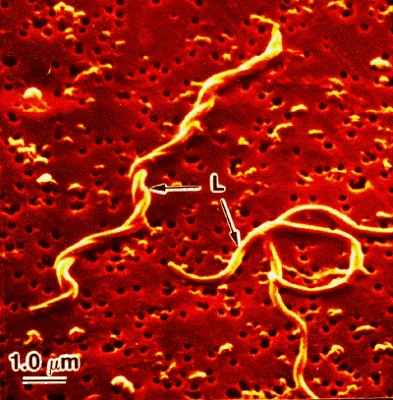Lyme disease Osteoporosis, Osteopenia

Lyme disease Osteoporosis, Osteopenia connection. Recent studies have shown that Lyme disease can cause the bone loss that leads to a diagnosis of Osteopenia or Osteoporosis. The journal of Infection and Immunity published an article in February 2017 that documents this connection.
Researchers inoculated some mice with B. burgdorferi (lyme pathogen) and gave other mice a mock infection. Then they "measured the presence of B. burgdorferi DNA in bones, bone mineral density (BMD), bone formation rates, biomechanical properties, cellular composition, and two- and three-dimensional features of bone microarchitecture."
They found lyme (B. burgdorferi DNA ) in the bones of the mice. They found that this infection in long bones, correlated with reductions in areal and trabecular volumetric BMDs. (bone loss to the inner part of bones).
"Trabecular regions of femora exhibited significant, copy number-correlated microarchitectural disruption" But they found that the bone mineral density of cortical (outer part of bones) were not affected.
This is significant since the weakening of inner bone can lead to sudden fracture.
What caused this Lyme disease Osteoporosis, Osteopenia
Researchers found that the loss of bone in the tibiae of the mice was not due to increased osteoclast numbers or bone-resorbing surface area. In other words lyme did not increase the removal of 'old' bone.
Instead "it was associated with reduced osteoblast numbers" and since osteoblasts are our bone building cells is appears that , Lyme disease Osteoporosis, Osteopenia was due to impaired bone building. "Osteoid-producing and mineralization activities of existing osteoblasts were unaffected by infection... (the) deterioration of trabecular bone was not dependent on inhibition of osteoblast function but was more likely caused by blockade of osteoblastogenesis, reduced osteoblast survival, and/or induction of osteoblast death. In other words lyme disease has among its many effects the death of bone building cells.
Researchers concluded "Together, these data represent the first evidence that B. burgdorferi infection induces bone loss in mice and suggest that this phenotype results from inhibition of bone building rather than increased bone resorption."
"The Lyme Disease Pathogen Borrelia burgdorferi Infects Murine Bone and Induces Trabecular Bone Loss" by Tian TianTang, Lucia Zhang, Anil Bansal, Marc Bansal, Marc Grynpas and Tara J. Moraiarty.
Importance of this research
Tick borne Lyme disease appears to be spreading across the globe. Once confined to the North East of the United States, lyme can now (2017) be found in Belgium, Canada, Czech Republic, Estonia, Finland, France, Germany, Hungary, Ireland, Lativa, Lithuania, Netherlands, Norway, Poland, Romania, Russia, Serbia, Slovakia, Slovenia, Sweden, Switzerland, Ukraine, United Kingdom and the United States.
This is important. If you have been diagnosed with lyme, you may want to ask your health care provide to order a bone density scan. And if you develop 'chronic lyme' you may want to request regular bone density testing. If your health care provider appears reluctant to prescribe bone density testing,
Read more about Ostepenia and Osteoporosis at:
Causes of Bone loss , Natural treatments for Osteopenia and Osteoporosis , Medications to reverse bone loss

